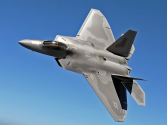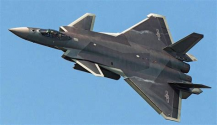The numbers actually allow 24 aircraft per batch starting with batch 05. Likely? No.I think that's a hypothesis that fits reasonably well with the observed data, say with 90% confidence level.
CB00-11
CB00-14 DX 787
CB00-18
s/n: 1 - 20
------------------------------------
CB01-21
CB01-34 ETC 9th Bde 62103?
CB01-40 ETC 9th Bde 62200?
s/n: 21 - 40
------------------------------------
CB02-55 NTC 1st Bde
CB02-56 NTC 1st Bde
s/n: 41 - 60
------------------------------------
CB03-69 3rd Training Regt
CB03-70 3rd Training Regt
s/n: 61 - 80
------------------------------------
CB04-xx, no observed data
s/n: 81 -100
------------------------------------
CB05-107 ETC 8th Bde
s/n: 101 - 120
------------------------------------
CB06-xxx, no observed data
s/n: 121 - 140
---------------------------------
CB07-156
s/n: 141 - 160
So if batch #7 is the current batch in production, we have at most 160 J-20s in service now.
The J-20 is as interceptor as the F-4 was. It definitely sacrificed a bit of turning performance for range, max speed, a larger radar, etc, but it is a fighter. You don't need lifting canards, ventral stabilizers, huge LERXes on a MiG-31-like aircraft. In fact if what we heard about the WS-15 is true, when it gets those WS-15s, it will have by far the highest thrust-to-weight ratio of any aircraft. That means a lot for the climb, acceleration and sustained turn. The J-20 definitely has superb kinematics.it can be 20 per batch but if they ramp up the production even more i don't think it wold be 20 actually im amused by the fact that PLAF has so many J-20's it looks at least to me that they use it as pure Interceptor more than Fighter as more i read the more im convinced that the Russian replacement for MiG-31 PAK-DP would look a lot like J-20 ( without the DSI ) if the trumpeter 1/48 kit is correct in size ( big if )
compared to Mig-31 in the same scale they look similar in size


